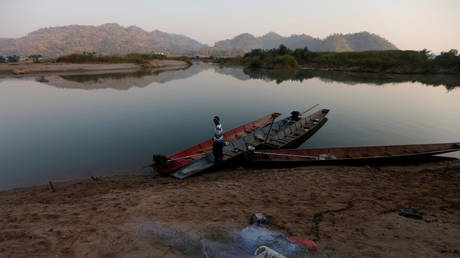
Water levels along the Mekong River have fallen ‘considerably’ since the start of the year, decreasing to “worryingly” low levels, after China reduced outflow from the Jinghong Dam, the river’s governing body said.
On Friday, the Mekong River Commission (MRC) Secretariat reported that the level of the water between the dam’s hydropower station in Yunnan province, China, and the Mekong Delta in Vietnam had dropped dramatically.
“There have been sudden rises and falls in water levels immediately downstream of Jinghong and further down to Vientiane [the capital of Laos], which has been challenging for authorities and communities to prepare for and respond to possible impacts,” said Dr Winai Wangpimool, director of the MRC Secretariat’s technical support division, in a statement.
The commission noted that the dam’s outflow was 800 m³/s on February 11 – considerably lower than the normal level of 1,400 m³/s, yet higher than had been recorded in January. The statement urged China to share its water-release plans and data with the commission more readily to “help the Lower Mekong countries manage risks more effectively.”
The river has reportedly turned from brown to aquamarine in places, signaling a dearth of nutrition-rich sediment. The MRC added that reduced rainfall has also contributed to low water levels.
In January, China warned other states along the Mekong River that maintenance works at the hydroelectric dam would cause a considerable reduction in flow for 20 days, sparking ecological concerns over the fish-rich waterway.
Prior to China’s announcement, in late December, using new US-funded technology, the MRC had already noted a near 50-percent reduction in waterflow from the hydropower station. Beijing said levels would gradually be increased to normal operation status on January 25, without specifying the volume that would be restored.
The world’s seventh-longest river, the Mekong accounts for up to a quarter of the global freshwater fish catch, and provides a living for around 60 million people in South East Asia, according to the World Wildlife Fund. The MRC has previously stated that suddenly restricting the waterflow could “be devastating for fish recruitment.”
If you like this story, share it with a friend!




